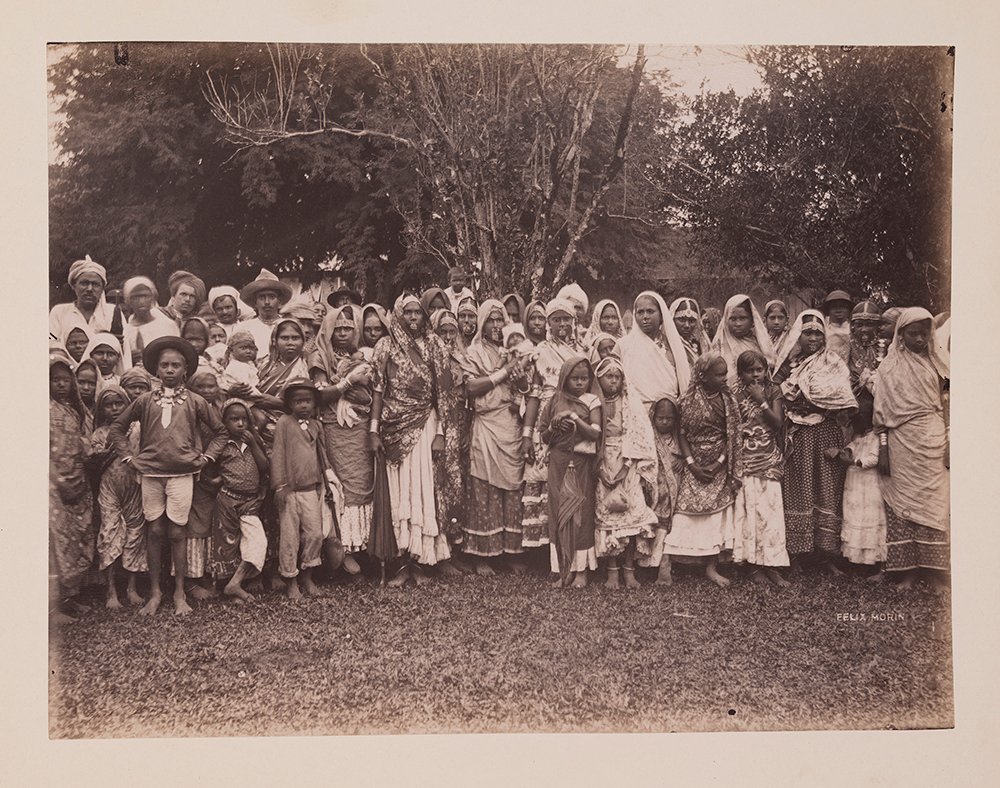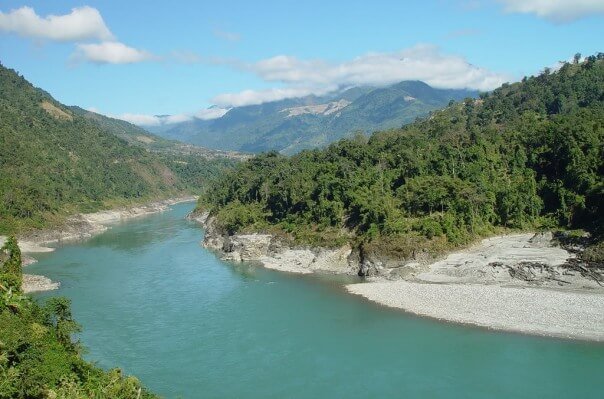“Bistirno parore asankhya jonore Hahakar sunio nisabde nirobe Burha Luit tumi Burha Luit boa kiya”
Translation:
On your wide mighty banks that are home to countless people, in spite of hearing their anguished cries so silently and unmindfully, Oh you Old Luit (Luit is another name of Brahmaputra river.) Yet, why do you flow?

Dr. Bhupen Hazarika’s song inspired by the “Old Man River”, by Paul Robson speaks of human sorrows and is symbolic of the river as a continuous witness of the cycles of both creation and destruction. Of the many sorrows, the river Brahmaputra has witnessed, the coolie trade is one dismal chapter, which relied upon the river for the transportation of poor workers.
The environment of the Brahmaputra River valley was crucial to India’s colonisation process. Opium, caoutchouc, and tea businesses grew around the river basin’s distinctive ecology. The Brahmaputra River’s extensive network of tributaries and advantageous location also made it easy to transport indentured labourers to various locations, to labour in these businesses. Assam, Bengal, and Bihar were significant sources of indentured labour. In the fourth century, under the rule of the Kamrupa Kingdom, commerce on the Brahmaputra River began at the significant riverine port of Pragjyotishpura (today’s Guwahati). This trade continued during the Ahom period and significantly expanded while the country was ruled by the British. In India, the first steamers were plied on the Hooghly (a branch of the Ganga) in 1817–18. Commercial use of steamers started in 1823 with the launch of Diana on the Hooghly. After two decades or so, steamers were launched in the valley. Steamers started plying between Assam and Calcutta in July 1847, though the frequency is unknown. Initially, Guwahati was the terminus. With the setting up of Dibrugarh cantonment in the late 1840s, steamers started running to Dibrugarh station too. The steamboat was convenient for tea planters as well as merchants coming from Bengal. Jute, hemp, seeds and safflower were traded by the steamers until the early 1850s. Alongside, steamers that were mainly used by the European merchants and planters, Assamese people continued to use a raft, constructed on two or three small boats.

The Brahmaputra became the core focus of the East India Company once they took over Assam in 1826. Trade in the area increased as a result of the discovery of tea, coal, and petroleum. Robert Bruce’s discovery of tea in 1821 resulted in the conversion of Assam’s economy to a “tea economy.” At Lakhimpur in Assam, the first tea garden was established in 1835. The tea industry started to grow gradually, and more workers were required to expand the number of tea gardens. This caused a large influx of labourers from various regions of India. A new class known as the Baganiyas or coolies emerged in the area in 1903 due to the estimated 543,800 immigrants who arrived in Assam. These tea workers were initially transported from their home country to Calcutta, and they were taken there before being transported to tea gardens in Assam and Cachar by means of boats and steamers. These new recruits could be transported more easily due to the steamers that ran along the Brahmaputra and Surma-Barak rivers. Steamers and boats were the only ways to reach the Calcutta port before the late nineteenth-century construction of railways. The goods were transported to Calcutta by steamboat, and from there they were shipped to England. Navigation on the Brahmaputra was extremely easy due to the region’s plentiful rainfall, which lasts for almost eight months of the year and continues for the other four, as well. The steamers operated from Dibrugarh and Guwahati.
The steamers connected Dibrugarh to Guwahati and Calcutta, plying on a daily basis through Narayanganj, via Barisal, to Chandpur. Small feeder-streamers operate on the river and its tributaries in June, July, and August, which is the flood season. Steamers firmly incorporated Assam with global capital while also boosting trade between Assam and Bengal. This led to the transformation of Assam into a “colonial hinterland”. With the passage of time, there were 1,100 kilometres of steamer routes. The coming of Railways had a vast impact on the market altering the role that was previously played by steamers. Steamer’s market share steadily decreased, and by 1909, railways and steamers shared exports equally, with the latter trailing in import trade.
In conclusion, the Brahmaputra River was crucial to the Coolie Trade because it provided a convenient route for bringing indentured workers to Assam. The Brahmaputra River’s riverine routes allowed for the transportation of these labourers. Steamers and boats developed into essential modes of labour and cargo transportation, connecting the area to the ports and facilitating trade with other regions of India and the British Empire. This transportation was made possible in large part by the river’s navigability, which was made possible by the region’s plentiful rainfall. Thereby, leaving a lasting impact on the history and culture of the Indian subcontinent by facilitating labour migration, cultural interactions, and economic transformations.
